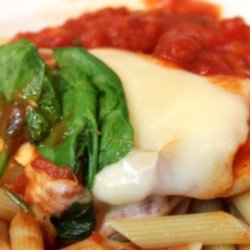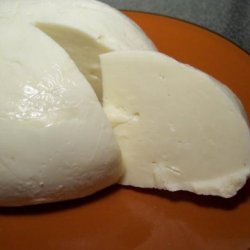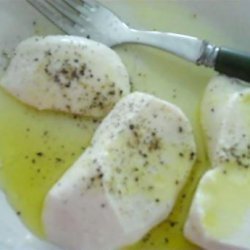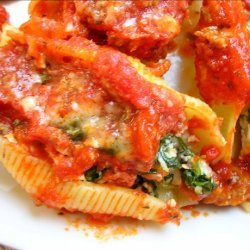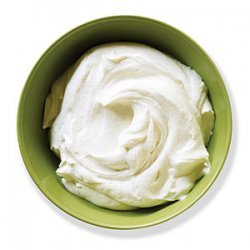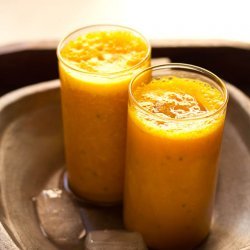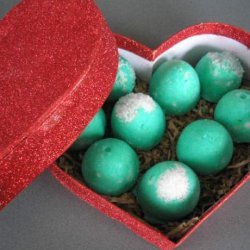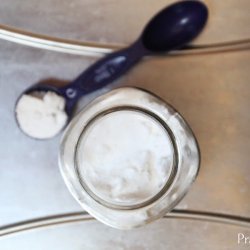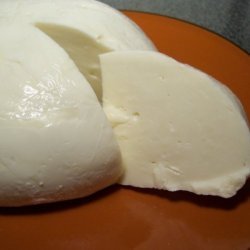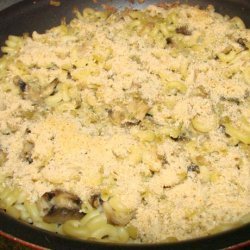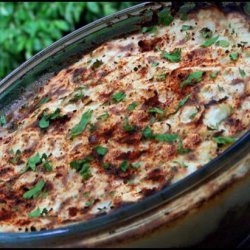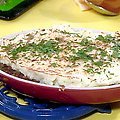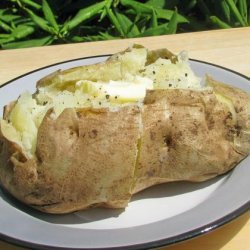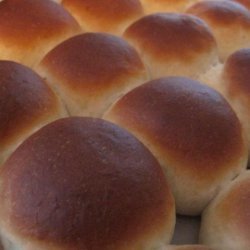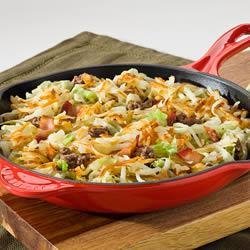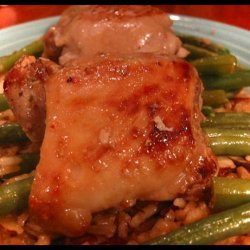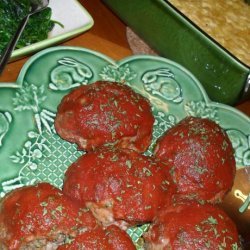Ingredients:
- 1/4 tsp liquid rennet , unchlorinated water or 1/4 rennet tablet, diluted in 1/4 cup cool unchlorinated water
Directions:
- Remember if you are using fresh, raw milk, you have to pasteurize it first (found above in the 'Description').
- Slowly heat the milk in a stainless steel pot to 55 degrees. While stirring, add the citric acid solution to the milk and mix thoroughly.
- Heat the milk to 88 degrees over medium-low heat. The milk will begin to curdle. (A NOTE that I found - The bit about milk not curdling at 88F is wrong, since it curdles just fine at 68-72F for chevre, and 88F is a standard setting temp for cheddar cheese. When I make cheese from my raw farm milk this is where I set it to coagulate. I may raise the temp a bit due to high buttterfat or other seasonal changes to get the whey out but not by much. However, if you are using store-bought milk, we do find that it needs to be heated a bit higher for coagulation (93-97F) after setting, and then a bit more after that to release the whey.).
- Gently stir in the diluted rennet with an up-and-down motion for 30 seconds. Then let the milk sit still while heating it to between 100 and 105 degrees. In about 5 to 8 minutes, the curds should be pulling away from the sides of the pot. Turn off the heat.
- The curds will look like thick yogurt and have a bit of shine to them, and the whey will be clear. If the whey is still milky white, wait a few more minutes before turning off the heat. Scoop out the curds with a slotted spoon and put into a 2-quart microwavable bowl. Press the curds gently with your hands, pouring off as much whey as possible.
- Microwave the curds on high for 1 minute. (Without a Microwave follows below.).
- Drain off all excess whey. Gently fold the cheese over and over (as in kneading bread) with your hand or a spoon. This distributes the heat evenly throughout the cheese, which will not stretch until it is too hot to touch (145 degrees inside the curd). You may want to don rubber gloves at this point, as the cheese will be extremely hot to the touch.
- Microwave two more times for 35 seconds each; add salt to taste after the second time. After each heating, knead again to distribute the heat.
- Knead quickly until it is smooth and elastic. When the cheese stretches like taffy, it’s done. If the curds break instead of stretch, they are too cool and need to be reheated.
- When the cheese is smooth and shiny, roll it into small balls and eat while warm. Or place them in a bowl of ice water for half an hour to bring the inside temperature down rapidly; this will produce a consistent smooth texture throughout the cheese. Although best eaten fresh, it can be stored in the refrigerator at this point.
- Note: If you are using store-bought milk, and your curds turn into the consistency of ricotta cheese and will not come together, switch brands of milk. It may have been heated at the factory at too high a temperature.
- *How to Make Quick Mozzarella Cheese Without a Microwave*.
- Follow the recipe for 30-minute Mozzarella until Step 5.
- When you get to Step 5, reserve the whey. Then put on heavy rubber gloves.
- Heat the reserved whey to at least 175 degrees Fahrenheit.
- Add 1/4 cup of cheese salt to the whey.
- Shape the curd into one or more balls, put them in a ladle or strainer, and dip them into the hot whey for several seconds.
- Knead the curd with spoons between each dip and repeat this process several times until the curd is smooth and pliable. When it stretches like taffy, it's done.
- Roll the cheese into small balls, and serve warm. Or place them in a bowl of ice water for half an hour to bring the inside temperature down rapidly. This will produce a consistent, smooth texture throughout.
- If you have any cheese leftover (highly unlikely!), cover and store in the refrigerator.
Nutrition Facts
| Amount Per 1 Serving | |||
| Calories | 762.85 Kcal (3194 kJ) | ||
| Calories from fat | 37.05 Kcal | ||
| % Daily Value* | |||
| Total Fat | 4.12g | 6% | |
|---|---|---|---|
| Cholesterol | 57.99mg | 19% | |
| Sodium | 827.13mg | 34% | |
| Potassium | 3057.28mg | 65% | |
| Total Carbs | 107.65g | 36% | |
| Sugars | 99.55g | 398% | |
| Dietary Fiber | 0.26g | 1% | |
| Protein | 63.9g | 128% | |
| Calcium | 2393.1mg | 239% | |
| Amount Per 100 g | |||
| Calories | 38.24 Kcal (160 kJ) | ||
| Calories from fat | 1.86 Kcal | ||
| % Daily Value* | |||
| Total Fat | 0.21g | 6% | |
|---|---|---|---|
| Cholesterol | 2.91mg | 19% | |
| Sodium | 41.46mg | 34% | |
| Potassium | 153.26mg | 65% | |
| Total Carbs | 5.4g | 36% | |
| Sugars | 4.99g | 398% | |
| Dietary Fiber | 0.01g | 1% | |
| Protein | 3.2g | 128% | |
| Calcium | 120mg | 239% | |
* Percent Daily Values are based on a 2000 calorie diet. Your daily values may be higher or lower depending on your calorie needs.
Find out how many calories should you eat.
Get Your Recipe of Health!
Follow RecipeOfHealth on Facebook!


